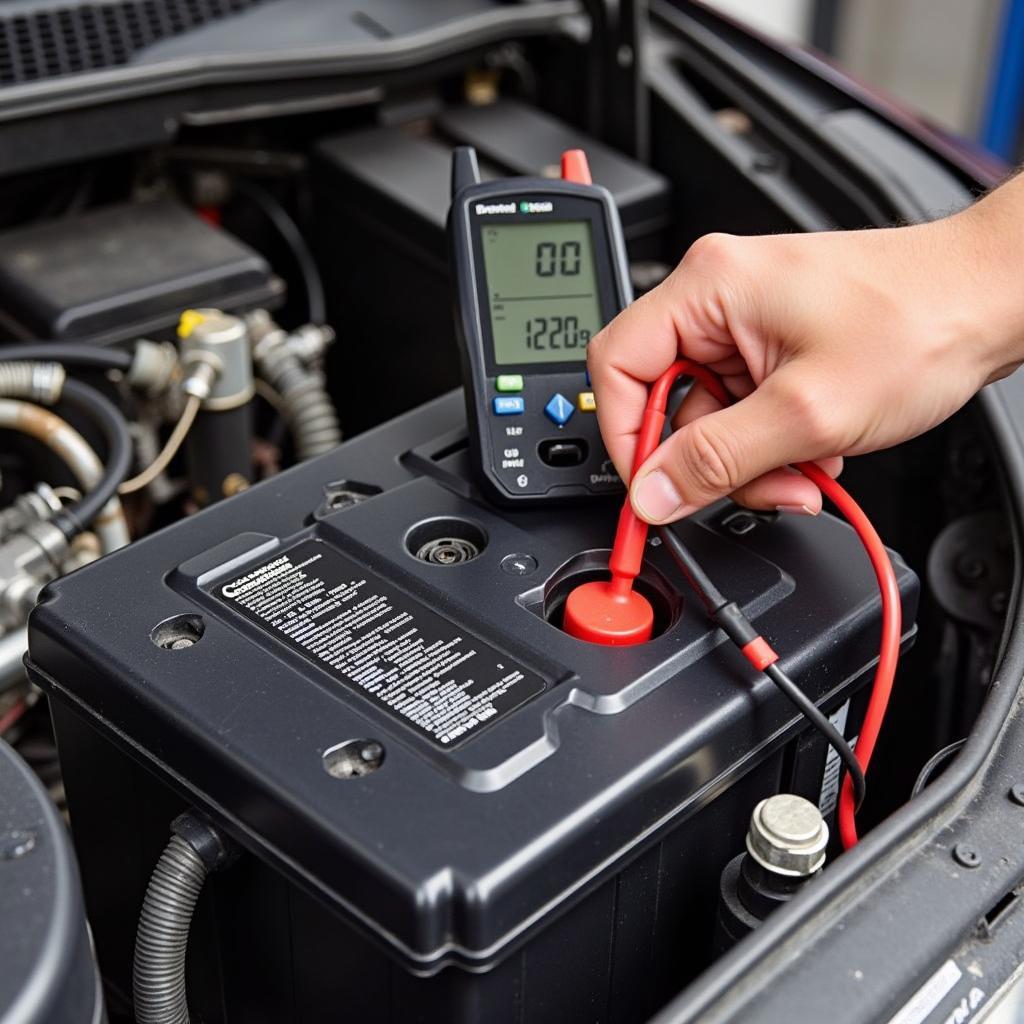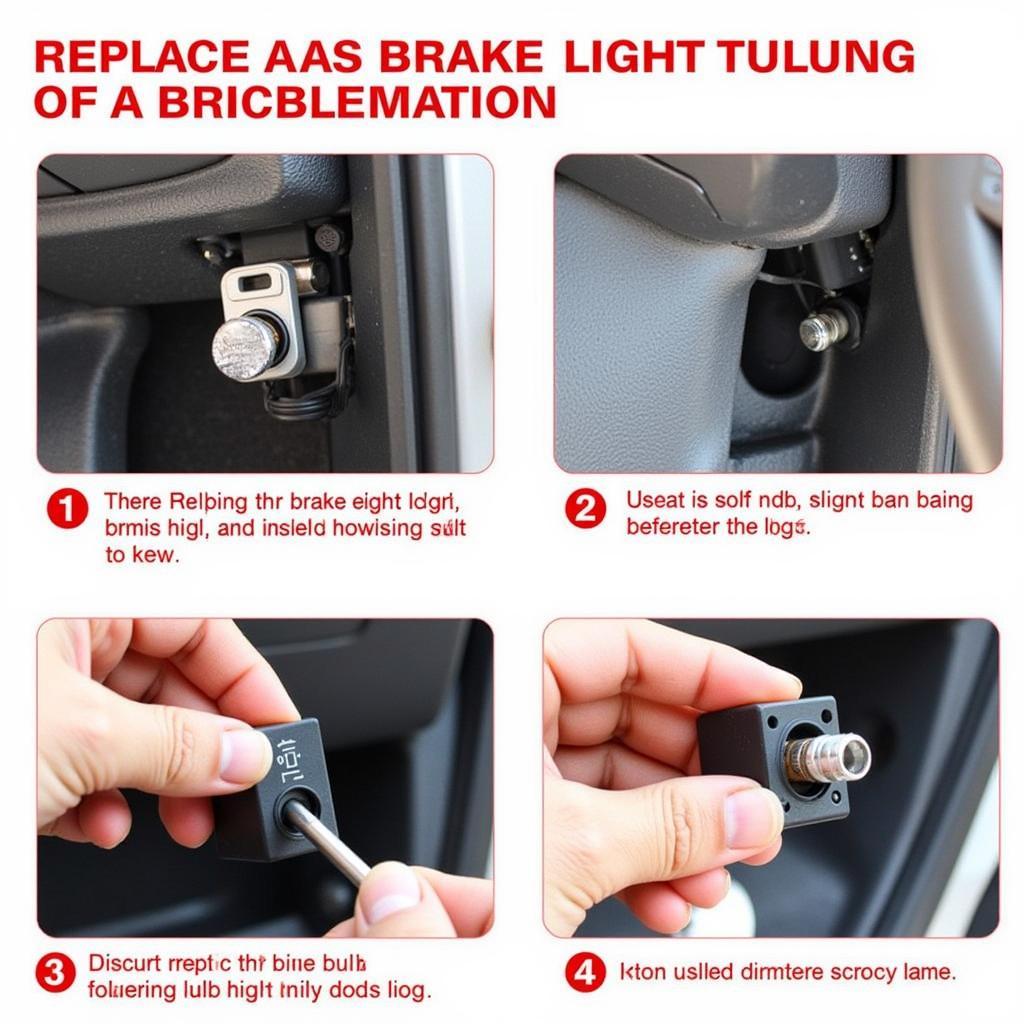A dead battery is a common car problem, but it’s not always the battery’s fault. A failing alternator can also cause a dead battery, leaving you stranded. Understanding the difference between an alternator dead battery scenario and a truly dead battery is crucial for proper diagnosis and repair. This article will help you determine if a faulty alternator is draining your battery and provide solutions to get you back on the road. is it a dead battery or alternator
Is a Dead Battery Caused by a Bad Alternator?
Often, a dead battery is the first sign of a failing alternator. The alternator’s job is to recharge the battery while the engine is running. If the alternator is failing, it won’t charge the battery effectively, eventually leading to a dead battery. This situation is sometimes referred to as an “alternator dead battery” scenario.
Signs Your Alternator is the Culprit
There are several telltale signs that your alternator might be the reason for your dead battery. These include dimming headlights, flickering dashboard lights, strange noises coming from the engine bay (whining or grinding), and difficulty starting the vehicle. If you jump-start your car and it dies again shortly after, a failing alternator is a likely suspect.
How to Test Your Alternator
Testing your alternator is relatively simple and can save you time and money. You can use a multimeter to check the voltage across the battery terminals while the engine is running. A healthy alternator should output between 13.5 and 14.5 volts. Lower readings suggest a failing alternator.
Steps to Test with a Multimeter
- Connect the red lead of the multimeter to the positive (+) terminal of the battery.
- Connect the black lead of the multimeter to the negative (-) terminal of the battery.
- Start the engine and let it idle.
- Observe the voltage reading on the multimeter.
 Testing Alternator with Multimeter
Testing Alternator with Multimeter
How to Fix an Alternator Dead Battery Problem
If your alternator is indeed the problem, you have a few options. Replacing the alternator is the most common and effective solution. You can do it yourself if you have some mechanical experience or have a mechanic do it for you.
DIY vs. Professional Repair
While replacing an alternator can be a DIY project, it can be challenging for those unfamiliar with car repair. A professional mechanic can ensure the job is done correctly and quickly.
“A faulty alternator can cause a cascade of electrical problems,” says automotive expert, John Miller. “Addressing the alternator issue promptly can prevent further damage to the vehicle’s electrical system.”
is my battery dead or is it the alternator
Preventing Alternator and Battery Issues
Regular maintenance is key to preventing alternator and battery problems. This includes having your battery tested periodically, especially during cold weather, and ensuring your alternator belt is in good condition.
Cold Weather and Your Battery
Cold temperatures can significantly reduce a battery’s performance. car battery issues in cold weather A weak battery coupled with a failing alternator is a recipe for disaster in frigid conditions.
 Car Battery in Cold Weather
Car Battery in Cold Weather
Conclusion
An alternator dead battery situation can be frustrating, but understanding the signs and knowing how to diagnose the problem can save you time and hassle. By following the tips outlined in this article, you can get your car back on the road quickly and efficiently. Don’t forget regular maintenance is essential for preventing future alternator dead battery issues.
dead alternator vs dead battery
FAQ
-
How long does an alternator typically last? Most alternators last between 7 and 10 years, depending on driving conditions and vehicle usage.
-
Can a bad battery damage the alternator? While less common, a severely discharged battery can strain the alternator, potentially shortening its lifespan.
-
What are the signs of a completely dead battery? A dead battery will show no signs of life, such as interior lights, dashboard lights, or any response when turning the key.
-
Is it cheaper to rebuild or replace an alternator? In most cases, replacing the alternator is more cost-effective than rebuilding it.
-
Can I drive with a bad alternator? You can drive for a short distance with a bad alternator, relying solely on battery power, but it’s not recommended.
-
How much does it cost to replace an alternator? The cost varies depending on the make and model of your vehicle but typically ranges from $300 to $700.
-
How can I prevent my alternator from failing prematurely? Regular maintenance, including battery checks and inspecting the alternator belt, is the best way to prevent premature alternator failure.


